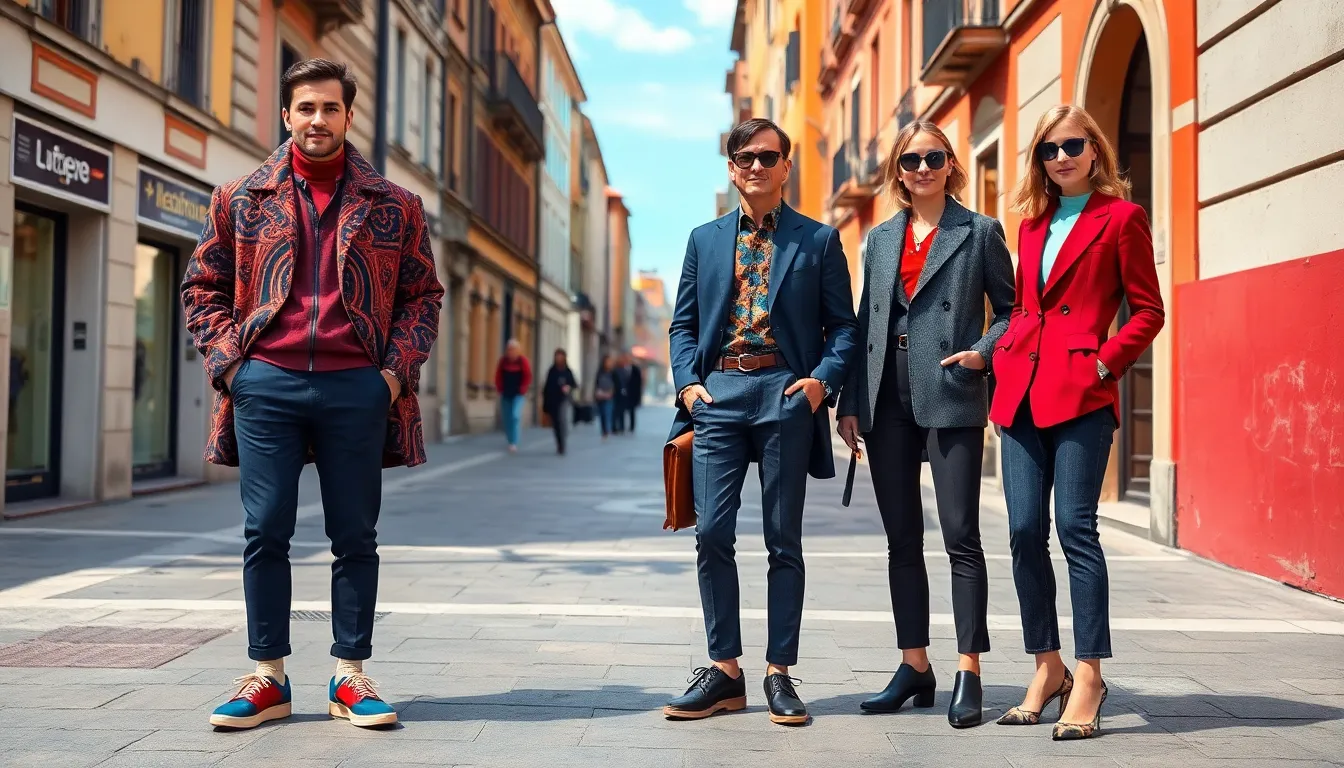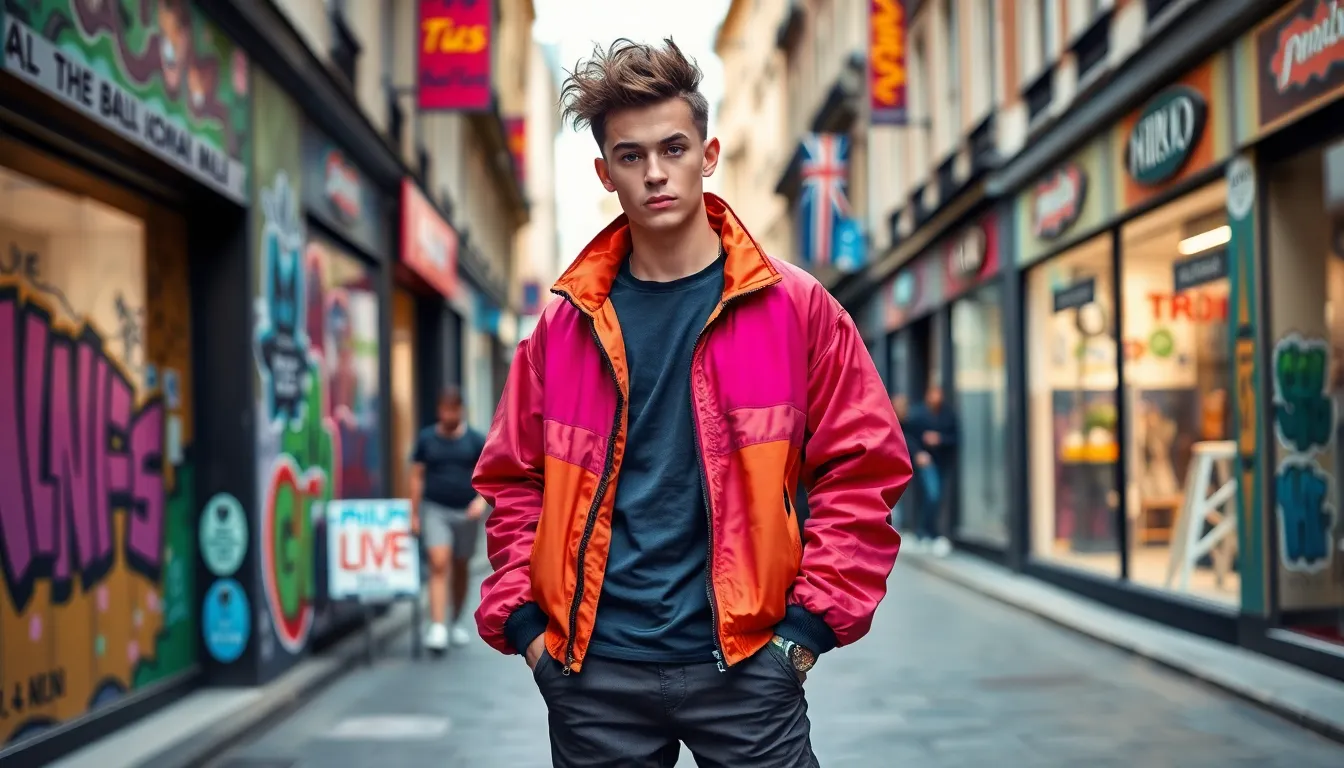Italian streetwear is more than just a fashion trend; it’s a cultural phenomenon that fuses high style with urban flair. Imagine strutting down the street in a bold graphic tee while sipping an espresso—now that’s la dolce vita! With a rich history steeped in craftsmanship and creativity, Italian designers are redefining what it means to dress casually yet chic.
From the bustling streets of Milan to the sun-soaked avenues of Rome, this style embraces individuality and self-expression. It’s where luxury meets laid-back vibes, proving that you can look effortlessly cool while still keeping it classy. So, if you’re ready to elevate your wardrobe and make heads turn, buckle up for a journey through the vibrant world of Italian streetwear. Get ready to unleash your inner fashionista—because who said you can’t wear sneakers with a tailored jacket?
Italian Streetwear
Italian streetwear stands out for its unique convergence of high fashion and urban culture. Designers merge luxurious materials with eclectic designs, creating a distinct style that defines this fashion movement. Renowned brands like Off-White, GCDS, and Palm Angels showcase the boldness and creativity that characterizes Italian streetwear.
Craftsmanship plays a central role in shaping these styles. Each piece reflects skilled artistry, elevating casual attire to sophisticated wear. Quality fabrics like cotton and wool enhance comfort while maintaining an upscale appearance. These elements appeal to fashion-forward individuals seeking both style and functionality.
Streetwear isn’t merely about clothing. It encapsulates a lifestyle, fostering a sense of community among enthusiasts. Collaborative collections often emerge, blurring the lines between designers and street culture icons. Social media platforms amplify this trend, enabling quick dissemination of styles and ideas across global audiences.
Iconic pieces frequently feature bold graphics, statement prints, and innovative silhouettes. Hoodies, oversized tees, and tailored joggers dominate wardrobes, allowing flexibility and personal expression. Footwear also plays a crucial role, with sneakers becoming essential fashion staples.
Influential events like Milan Fashion Week showcase Italian streetwear, attracting attention from global fashion circles. Shows emphasize diversity and inclusion, showcasing collections that resonate with a broad audience. This attention reinforces the importance of streetwear within the broader fashion landscape.
Italian streetwear reflects a dynamic interplay between tradition and modernity. Its impact reaches beyond clothing, influencing lifestyle choices and cultural identities. The vibrancy and energy of this movement invite individuals to embrace their style while celebrating the rich heritage of Italian fashion.
Key Characteristics Of Italian Streetwear

Italian streetwear stands out due to its distinctive blend of style and sophistication. This movement captures urban individuality while drawing from traditional Italian craftsmanship.
Unique Design Elements
Bold colors define many Italian streetwear pieces. Tailoring often combines traditional cuts with contemporary silhouettes. Innovative fabrics increase comfort and elevate aesthetic appeal. Patterns frequently reflect Italian heritage, incorporating motifs that resonate with cultural narratives. Logos and graphic designs emphasize personal expression, while unique accessories complete outfits, showcasing individual flair. Pioneering brands push boundaries, introducing items like oversized outerwear and statement sneakers that incite interest and conversation.
Cultural Influences
Italian streetwear derives influence from various cultural elements. Music, particularly hip-hop and electronic genres, forms a significant part of its identity. Subcultures, including skate and punk movements, also contribute to the overall style. Urban landscapes serve as a backdrop, inspiring designs that resonate with city life. Art and cinema frequently enrich the fashion narrative, blending visuals with clothing. Designers often look to social issues and local trends, fostering collections that reflect society’s pulse. This dynamic synergy results in a vibrant, multifaceted fashion landscape.
Popular Italian Streetwear Brands

Italian streetwear combines luxury and urban culture, leading to a rich variety of brands. Several established names and emerging designers shape this dynamic clothing landscape.
Established Brands
Off-White stands out with its distinctive graphics and cultural commentary. GCDS reflects a playful approach, often incorporating bold colors and pop culture references. Palm Angels takes inspiration from California skate culture while mixing Italian craftsmanship. These brands consistently push boundaries, employing innovative designs that capture both heritage and contemporary trends. Their pieces often serve as status symbols, merging street style with high fashion and attracting a global audience.
Emerging Designers
Emerging designers like Sunnei and Federico Cina highlight the vibrant creativity fueling Italian streetwear today. Sunnei emphasizes a casual yet refined aesthetic, focusing on sustainable practices. Federico Cina adds a unique twist with playful silhouettes and vivid prints, drawing attention to youthful expressions. These newcomers infuse fresh perspectives into the fashion scene, often collaborating with artists to create limited-edition collections. Their contributions signal a progressive shift in Italian streetwear, maintaining its relevance in an ever-evolving market.
The Rise Of Italian Streetwear In Global Fashion
Italian streetwear experienced significant growth, combining high fashion with urban aesthetics. Designers like Off-White, GCDS, and Palm Angels lead this movement, infusing unique graphics and cultural commentary into their collections. Off-White’s designs often challenge conventional fashion and resonate with a diverse audience. GCDS embraces vibrant colors and playful themes, presenting a fresh take on streetwear that appeals to a younger demographic. Palm Angels draws influences from California skate culture while upholding Italian craftsmanship standards.
Emerging talents, including Sunnei and Federico Cina, contribute to the expanding landscape. Sunnei’s approach emphasizes casual elegance with an eye toward sustainability. Federico Cina captivates with bold silhouettes and collaborations with artists, enhancing his brand’s appeal. These fresh perspectives invigorate Italian streetwear, maintaining its relevance in a rapidly changing market.
Craftsmanship remains essential, evident in each garment’s artistry and quality. Comfort and sophistication coexist, transforming clothing into expressions of lifestyle. Community among enthusiasts flourishes, encouraging collaborations that unite designers and street culture icons.
Distinctive elements characterize Italian streetwear, such as innovative fabrics and striking colors that enhance visual appeal. Tailoring merges traditional techniques with modern silhouettes, while patterns reflect deep-rooted Italian heritage. Influences emerge from music, urban landscapes, and diverse subcultures, enriching the fashion narrative. Hoodies, oversized tees, and tailored joggers dominate wardrobes, with sneakers solidifying their status as essential pieces. Events like Milan Fashion Week highlight the importance of Italian streetwear, underscoring the industry’s commitment to diversity and inclusion.
Conclusion
Italian streetwear stands at the intersection of tradition and modernity. With its unique blend of high fashion and urban influences, it continues to captivate fashion enthusiasts around the globe. The creativity and craftsmanship of both established and emerging designers ensure that this movement remains fresh and relevant.
As streetwear evolves, it invites individuals to express their personal style while celebrating a rich cultural heritage. The impact of social media further amplifies this trend, making it easier for fans to connect and share their love for this vibrant fashion scene. Embracing Italian streetwear means embracing a lifestyle that values innovation, quality, and community.





